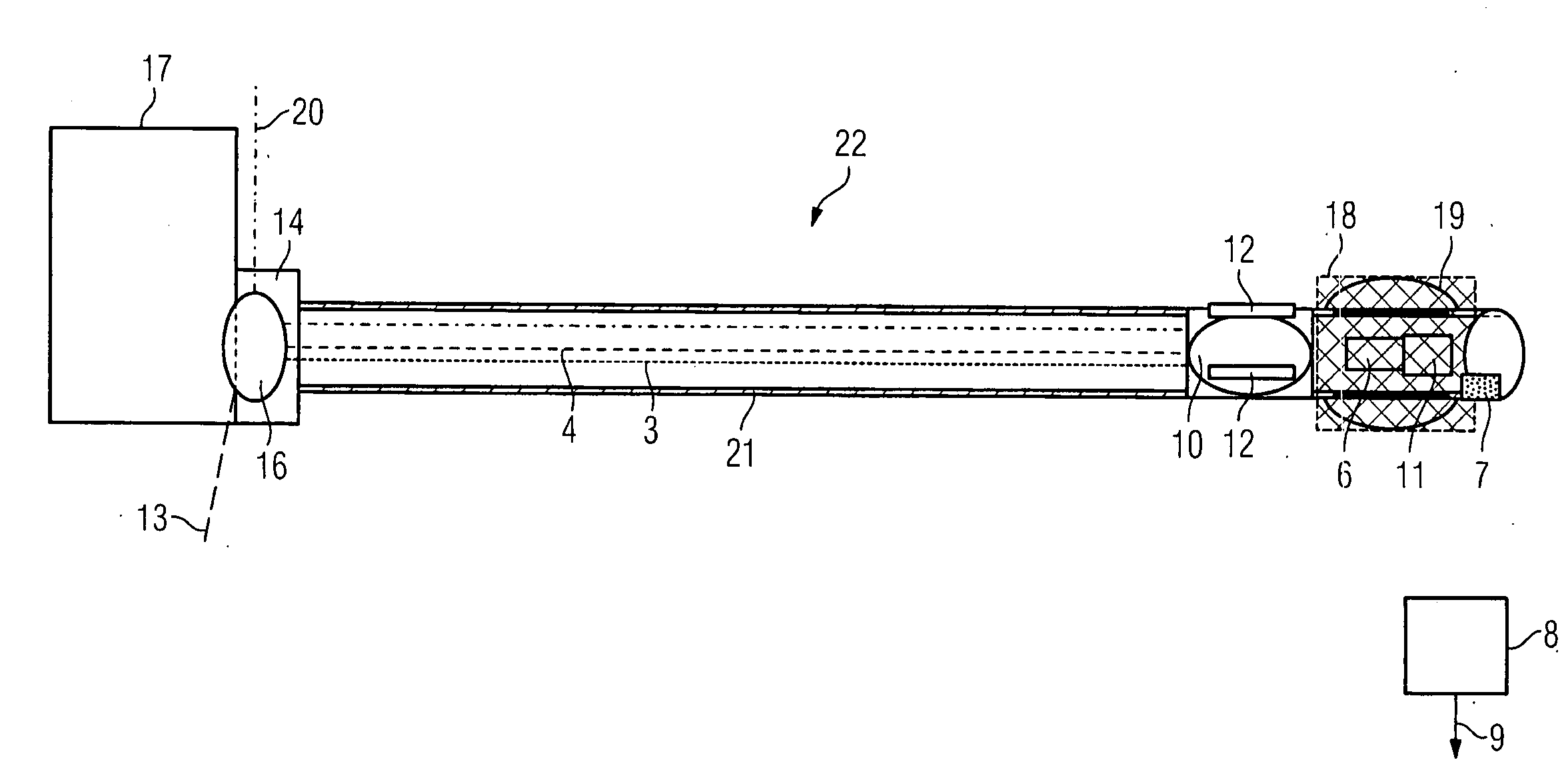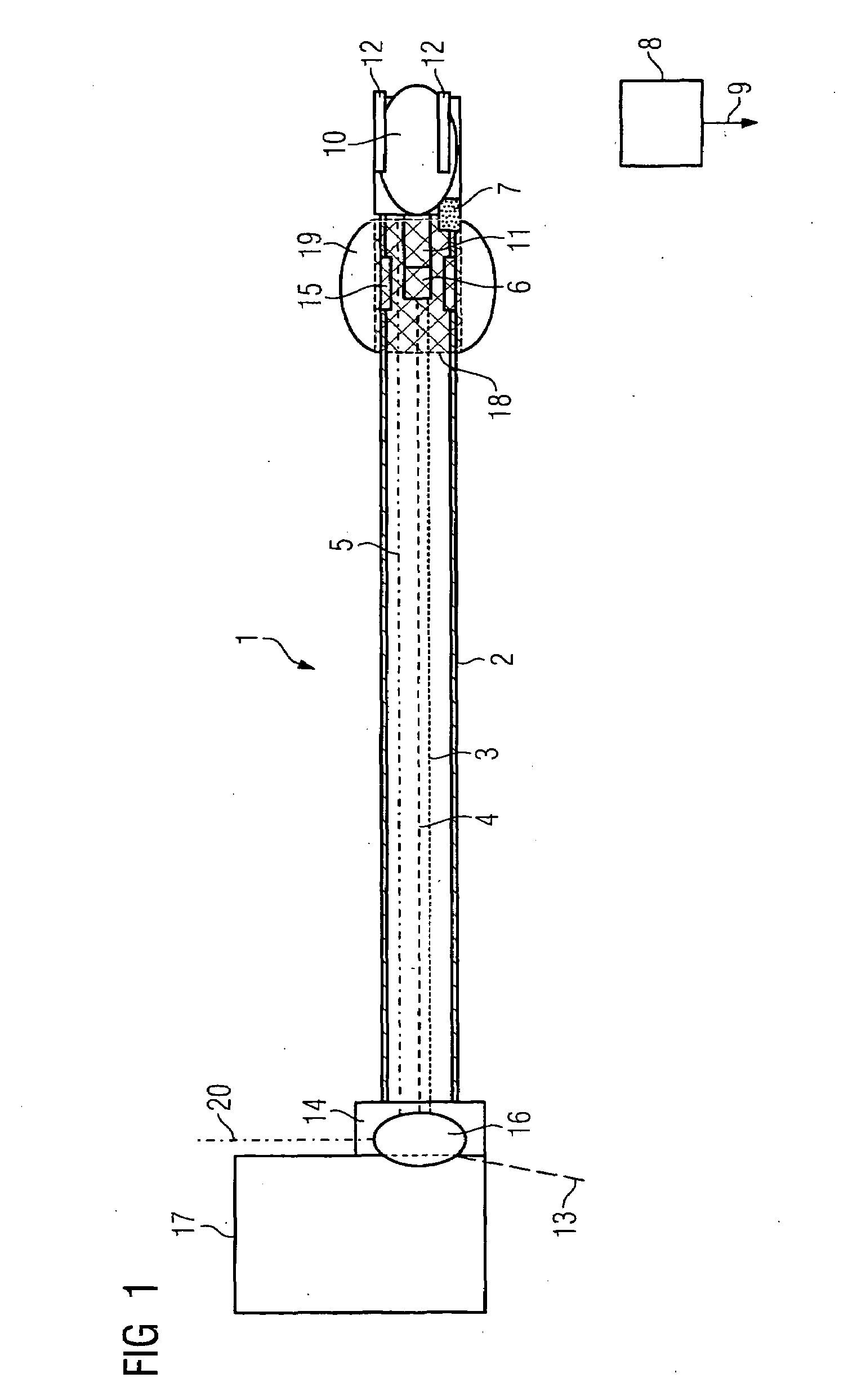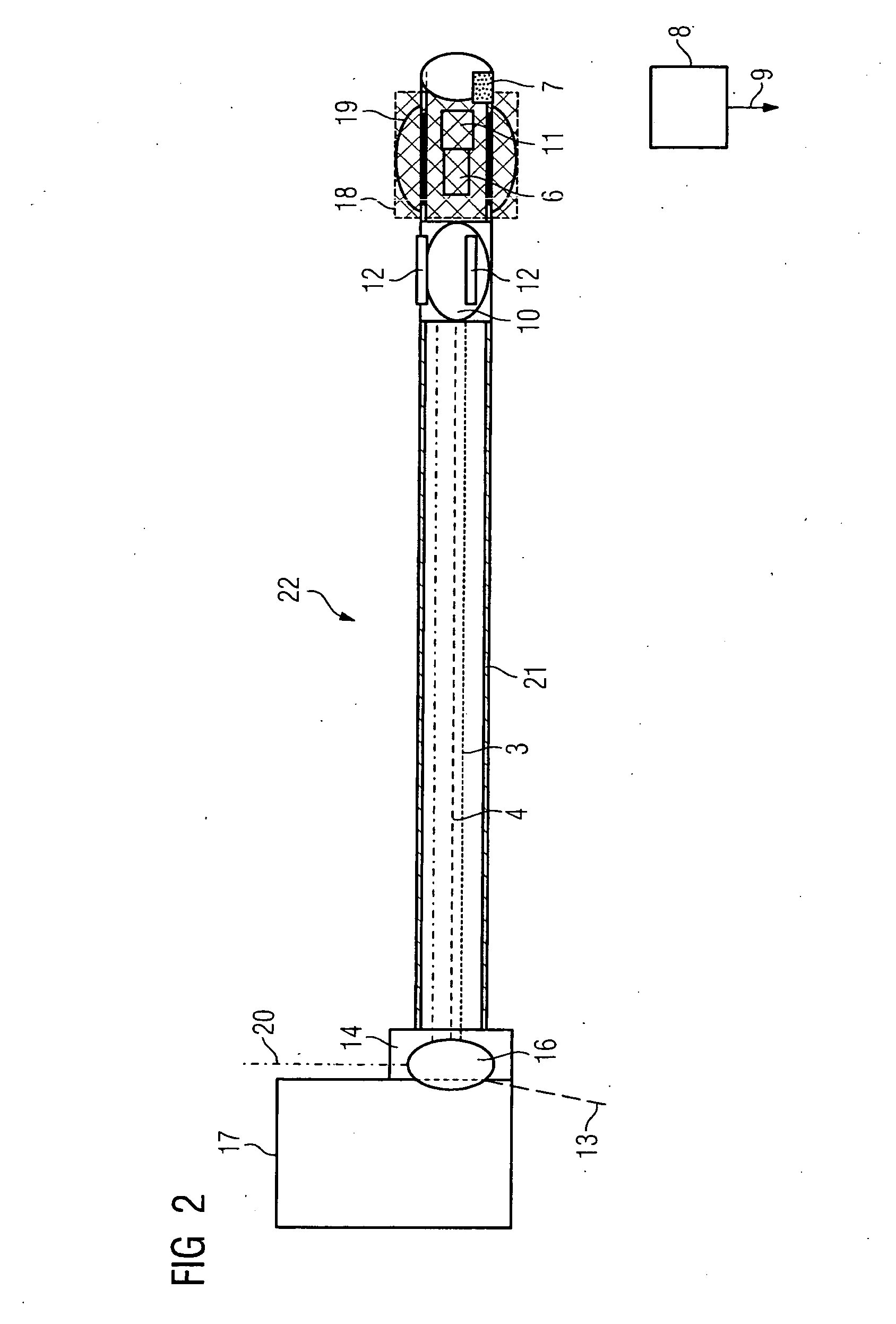Device for performing a cutting-balloon intervention
a technology of a device and a balloon, which is applied in the direction of catheters, blood vessels, angiography, etc., can solve the problems of not being able to reach all the areas of the vessels, many patients are allergic to contrast media or will develop a heat sensation, and patients may also sustain radiation injuries, etc., to achieve good recording, reduce the dose of x-ray radiation applied, and improve the effect of imaging
- Summary
- Abstract
- Description
- Claims
- Application Information
AI Technical Summary
Benefits of technology
Problems solved by technology
Method used
Image
Examples
Embodiment Construction
[0058]FIG. 1 shows an inventive device 1 with a cutting-balloon catheter. The inventive device 1 has a hollow flexible drive shaft 2 in which are integrated an OCT signal lead 3 and an IVUS signal lead 4. The OCT signal lead 3 is therein embodied as a glass-fiber lead. Further located in the flexible drive shaft 2 is a signal lead 5 of the position-sensor system embodied as an electromagnetic sensor system. Thus what results through the surrounding drive shaft 2 is an integrated unit that replaces the separate catheter used hitherto in favor of better image monitoring and treating of vascular occlusions.
[0059]What is to be preferred is an embodiment, not shown here, in which it is not the drive shaft 2 that rotates but only the IVUS and OCT sensor in order thereby, where applicable, to avoid friction between the catheter device and the vessel's interior wall and simultaneously cause the OCT sensor to turn.
[0060]The signal lead 5 of the electromagnetic position-sensor system leads to...
PUM
 Login to View More
Login to View More Abstract
Description
Claims
Application Information
 Login to View More
Login to View More - R&D
- Intellectual Property
- Life Sciences
- Materials
- Tech Scout
- Unparalleled Data Quality
- Higher Quality Content
- 60% Fewer Hallucinations
Browse by: Latest US Patents, China's latest patents, Technical Efficacy Thesaurus, Application Domain, Technology Topic, Popular Technical Reports.
© 2025 PatSnap. All rights reserved.Legal|Privacy policy|Modern Slavery Act Transparency Statement|Sitemap|About US| Contact US: help@patsnap.com



